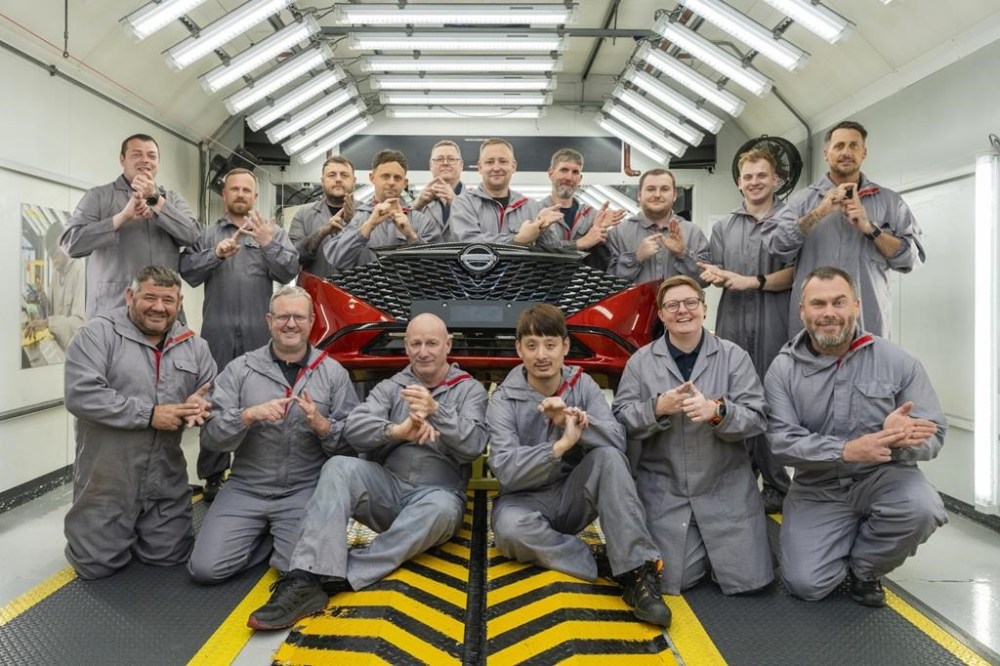Autoworkers learn sign language hoping connection with deaf colleagues improves work and lives
Advertisement
Read this article for free:
or
Already have an account? Log in here »
To continue reading, please subscribe:
Monthly Digital Subscription
$1 per week for 24 weeks*
- Enjoy unlimited reading on winnipegfreepress.com
- Read the E-Edition, our digital replica newspaper
- Access News Break, our award-winning app
- Play interactive puzzles
*Billed as $4.00 plus GST every four weeks. After 24 weeks, price increases to the regular rate of $19.00 plus GST every four weeks. Offer available to new and qualified returning subscribers only. Cancel any time.
Monthly Digital Subscription
$4.75/week*
- Enjoy unlimited reading on winnipegfreepress.com
- Read the E-Edition, our digital replica newspaper
- Access News Break, our award-winning app
- Play interactive puzzles
*Billed as $19 plus GST every four weeks. Cancel any time.
To continue reading, please subscribe:
Add Free Press access to your Brandon Sun subscription for only an additional
$1 for the first 4 weeks*
*Your next subscription payment will increase by $1.00 and you will be charged $16.99 plus GST for four weeks. After four weeks, your payment will increase to $23.99 plus GST every four weeks.
Read unlimited articles for free today:
or
Already have an account? Log in here »
Hey there, time traveller!
This article was published 06/09/2024 (397 days ago), so information in it may no longer be current.
LONDON (AP) — One doesn’t need to know sign language to understand what Michael Connolly feels about his colleagues’ efforts to break down the barriers posed by his deafness.
When asked what he thought of his teammates’ decision to learn British Sign Language, the 45-year-old autoworker at the Nissan plant in Sunderland, England, grinned and flashed a universal symbol: Two thumbs up.
Connolly loves having the chance to banter with his workmates, to talk about everyday things — the kids, vacation plans, a TV program. And now he can, because the entire 25-member bumper-paint team at Sunderland started learning BSL at the beginning of the year.

“I’m glad they have all learned sign language for us because I can talk and I lipread the hearing person, but I have my limits,” Connolly signed in an interview with The Associated Press. “If you reverse the situation and the hearing person can sign and speak, they have no limits.’’
The initiative grew out of a broader effort to improve efficiency at the Sunderland plant, which makes Qashqai and Juke sport utility vehicles. While Nissan took steps to overhaul training and increase the use of visual aids during briefings, the bumper-paint team decided to go a step further and learn sign language, said supervisor John Johnson.
Connolly is one of four hearing-impaired people assigned to the team, which works in less bustling area of the plant where it is safer for workers who can’t hear the sound of an approaching vehicle.
Johnson said the thought of mastering the combination of gestures, facial expressions and body language that comprise BSL was daunting. But it helped him understand what life was like for Connolly and the other deaf workers as they tried to learn their jobs and fit into a team without having the ability to share the personal tidbits that build friendships.
“So as a team, we thought how can we knock that barrier down? And obviously sign language was the solution, or at least the start of an opportunity,’’ Johnson said.
The team’s decision is very unusual, said Teri Devine, the associate director for inclusion and employment at The Royal National Institute for Deaf People. While many employers make an effort to reach out and engage with deaf workers, few go as far as learning sign language, she said.
Research shows that many deaf people, particularly BSL users, feel isolated at work, Devine said.
Having more hearing people who understand sign language is important because even the most proficient lip readers will only pick up 30% to 40% of a conversation, she added.
“It’s absolutely crucial that deaf people are included in everyday conversations, and it’s very easy to include them in those conversations,’’ Devine said. “The fact that (workers at) Nissan have gone and learned some BSL to support their colleague is actually fantastic. I take my hat off to them.’’
There are mountains of research showing that kindness in the workplace improves productivity as well as being good for the people with their noses to the grindstone, said Cary Cooper, a professor of organizational psychology and health at the Alliance Manchester Business School, University of Manchester.
You can see that at work on the bumper-paint team, where workers had limited ability to communicate before they learned sign language, Cooper said. But now they’ve created the opportunity for dialogue.
“You can find out: What did you do this weekend? What about the football results,” he said. “In other words, you’re cementing the relationship — the team building. And that’s important. It goes far beyond, you know, ‘you haven’t painted that bit of the bumper.’”

